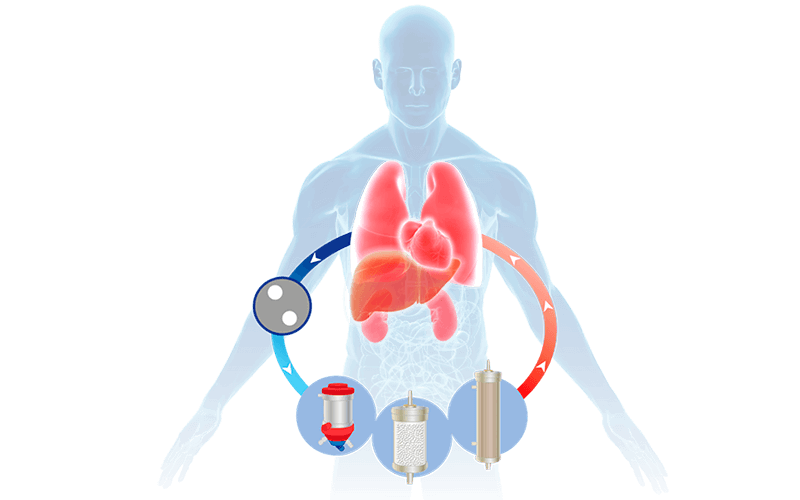“Preventive and therapeutic approach to Transplantation. From immune complexes removal in case of graft reject, to ex-vivo perfusion of organs retrieved for transplantation.”

However, many of the above organs could be transplanted if the quality and viability of the organ once removed is guaranteed. Therefore, restoring and maintaining the vitality of organs with a post-harvest organ preservation technique is a essential prerequisite for the correct use of even marginal organs, in order to increase their suitability.
The objective is to ensure the maintenance of the vitality of the organ and its function, even if there is no adequate blood supply, an appropriate removal of waste products of metabolism and physiological environment, more in general terms.
In addition, these organs are aggravated by ischaemia and reperfusion damage (ischemia-Reperfusion injury, IRI), which remains an important risk factor for marginal‘organs, limit the success of the transplant and the survival of the organ and/or the recipient, both in the immediate post-surgery and in the long term.
In particular, ischemia represents a lack of blood supply which results in a deficiency of oxygen and glucose, metabolites necessary for cell and tissue survival.
At the cellular level, ischemia leads to anaerobic metabolism and mechanisms are activated that ultimately lead to cell death. At a more macroscopic level, the molecules released by the damaged cells propagate and stimulate an inflammatory response in the tissues. If ischemia persists, the cells and structures continue to deteriorate and there is irreversible ischemic damage.
Resumption of blood flow to the ischemic tissue is called“reperfusion”. Through reperfusion, oxygen and glucose are returned to the tissue and cells. Apoptotic and necrotic cells lead to the activation of the innate immune response that determines the development and propagation of the inflammation, so that, with reperfusion, the ischaemic damage is exacerbated and accelerated.
Molecules to be removed:
Inflammatory cytokines, toxinsSuggested therapies:
PerLife® e PerLungs®
Kidney transplantation in an incompatible AB0 subject involves immediate aggression by the recipient’s antibodies against the transplanted organ. In this case it is necessary to introduce a desensitizing treatment on the recipient, starting about one month before the transplant.
In particular, prior to surgery, the recipient is subjected to some sessions of plasmapheresis, with the aim of removing from the recipient’s blood the antibodies that would lead to rejection. At the same time, three weeks before surgery, immunosuppressive drug therapy is initiated in the recipient, which is needed to stop the production of unwanted antibodies.
Molecules to be removed:
IgG; IgMSuggested therapies:
DFPP,Cascade Filtration
The acute form of antibody-mediated rejection (AMR, antibody-mediated rejection) is a serious and potentially fatal condition which, following a transplant, can lead to rapid deterioration or even complete loss of the grafted organ.
Acute AMR mainly affects patients who are sensitised to their donors, namely patients who, due to previous transplants, transfusions or pregnancies, possess“donor-specific antibodies” (DSA) that, by binding to the antigens present on the donor’s organ, seem to trigger the uncontrolled activation of the complement system, causing an immune reaction that ends up damaging the transplanted organ.
There are also cases where DSA antibodies develop de novo following organ transplantation and through various mechanisms, lead to rejection. Treatment for this type of rejection involves the administration of immunosuppressants, intravenous immunoglobulins, monoclonal antibodies and plasmapheresis, which aims to remove the antibodies involved in the rejection process quickly and effectively from the bloodstream.
Molecules to be removed:
IgGSuggested therapies:
DFPP,Cascade Filtration
